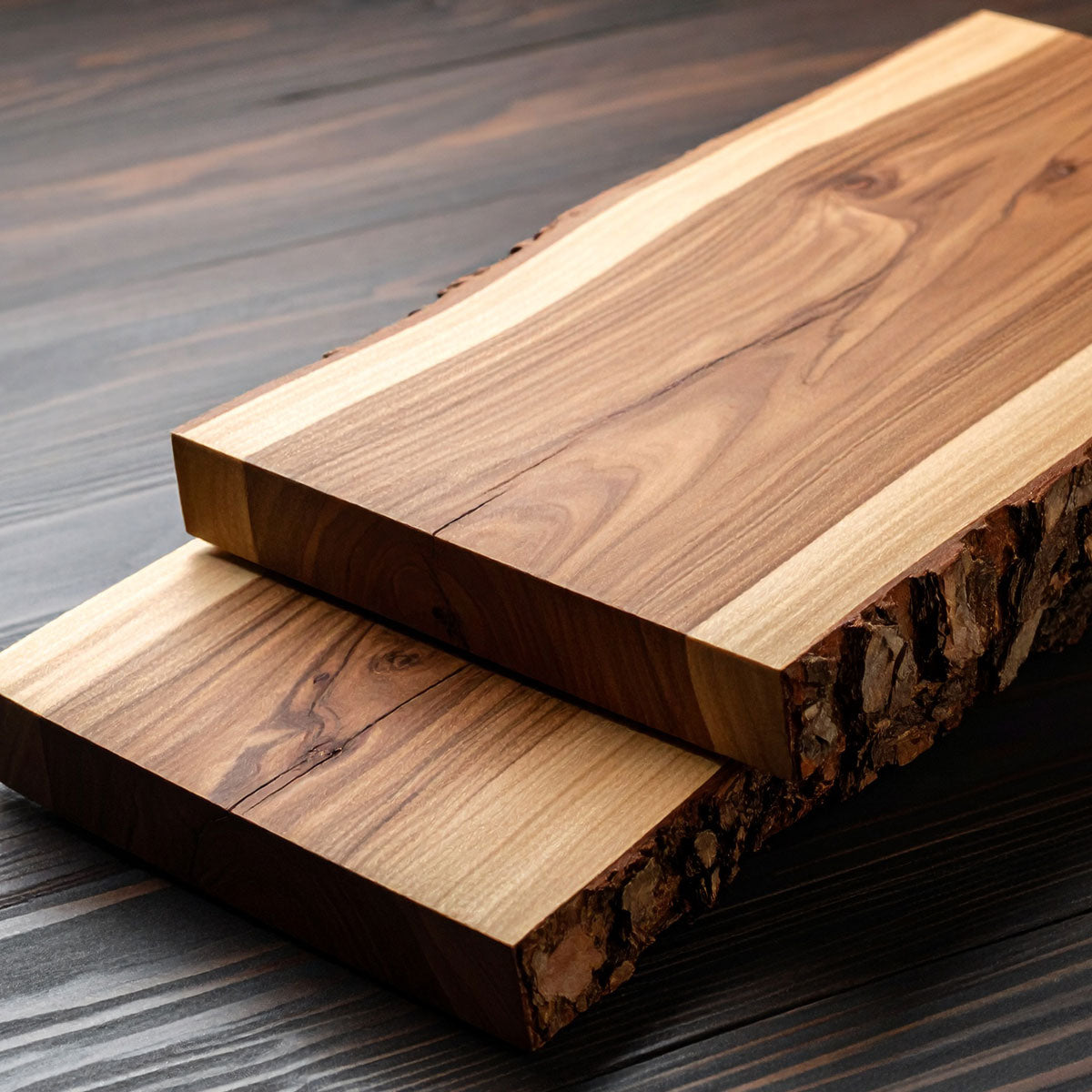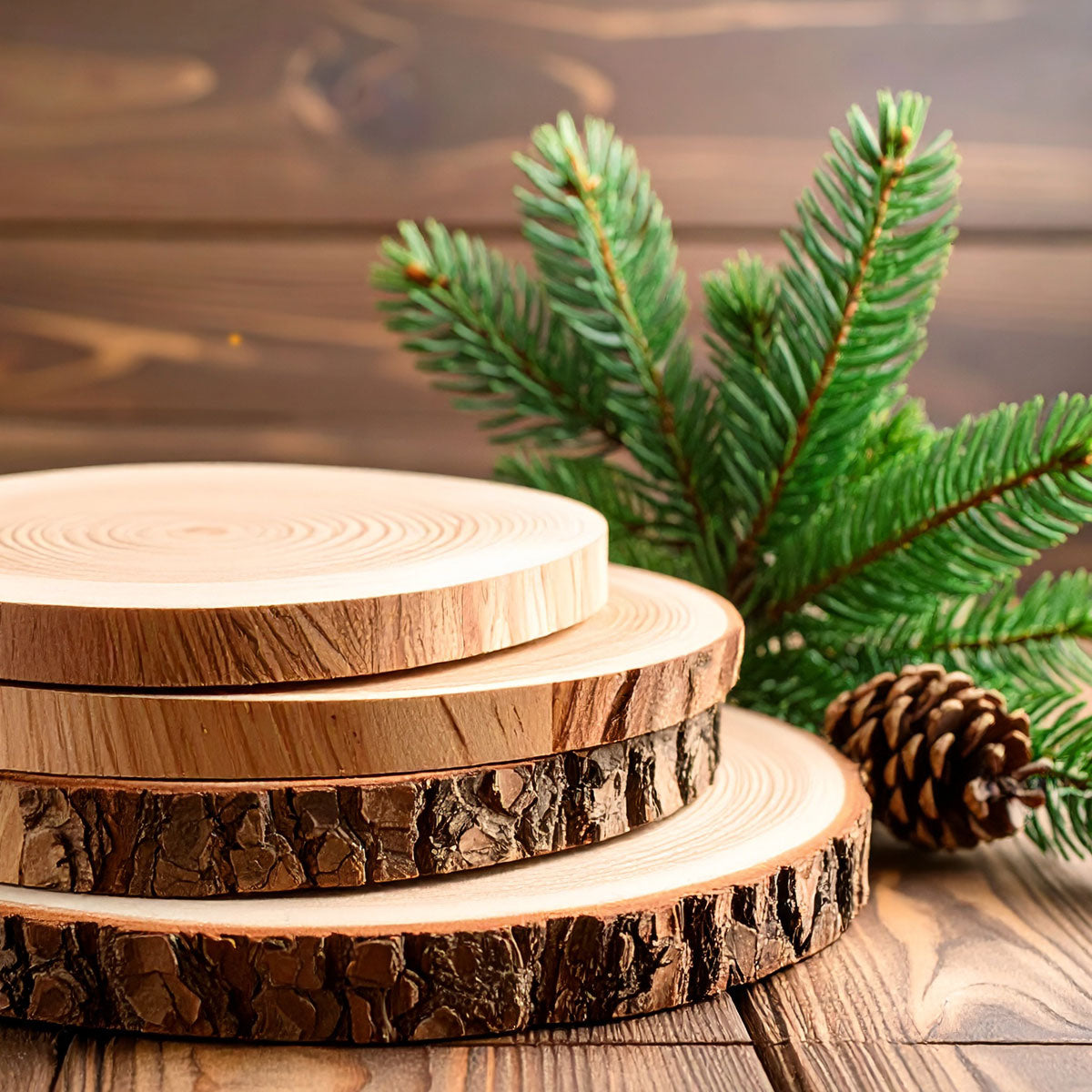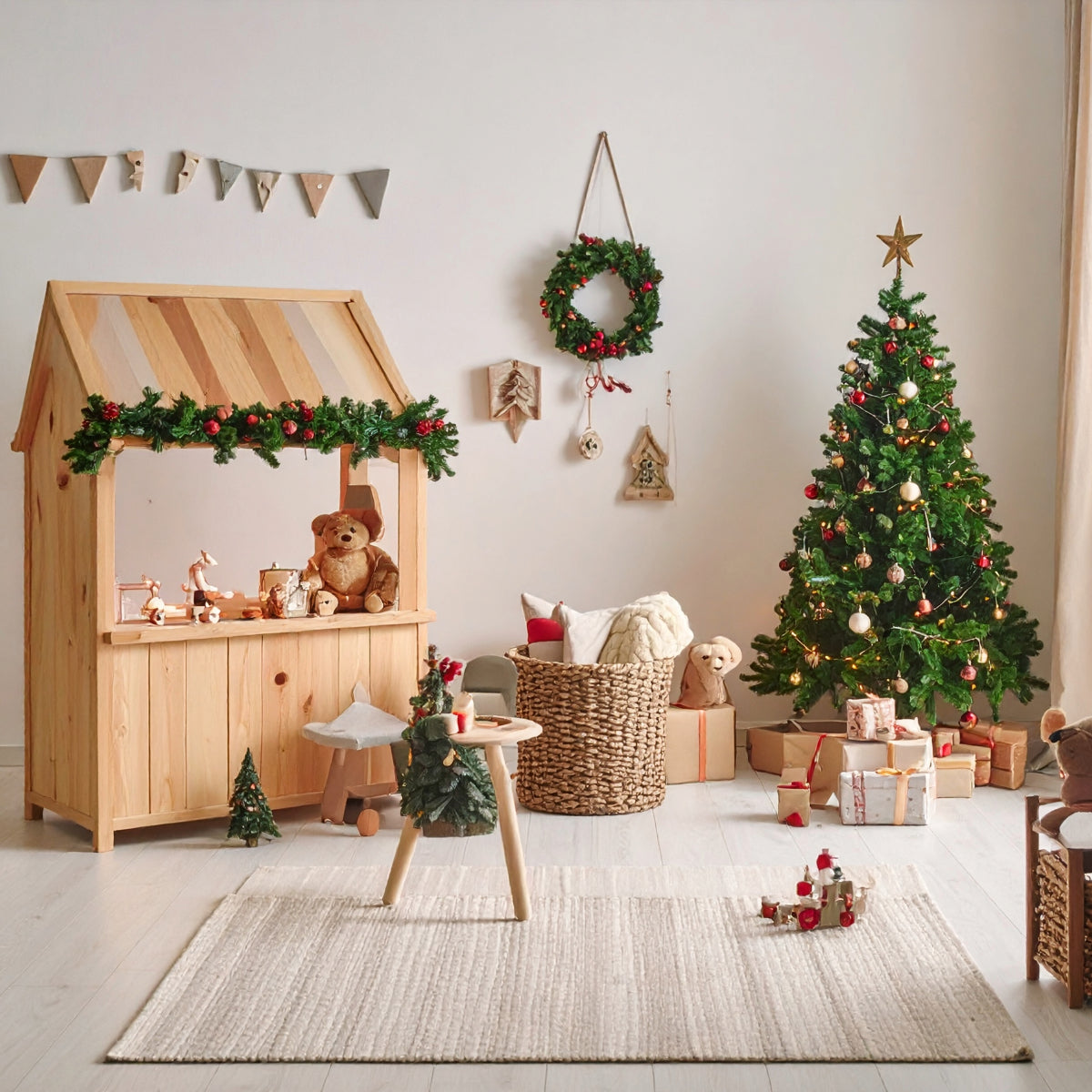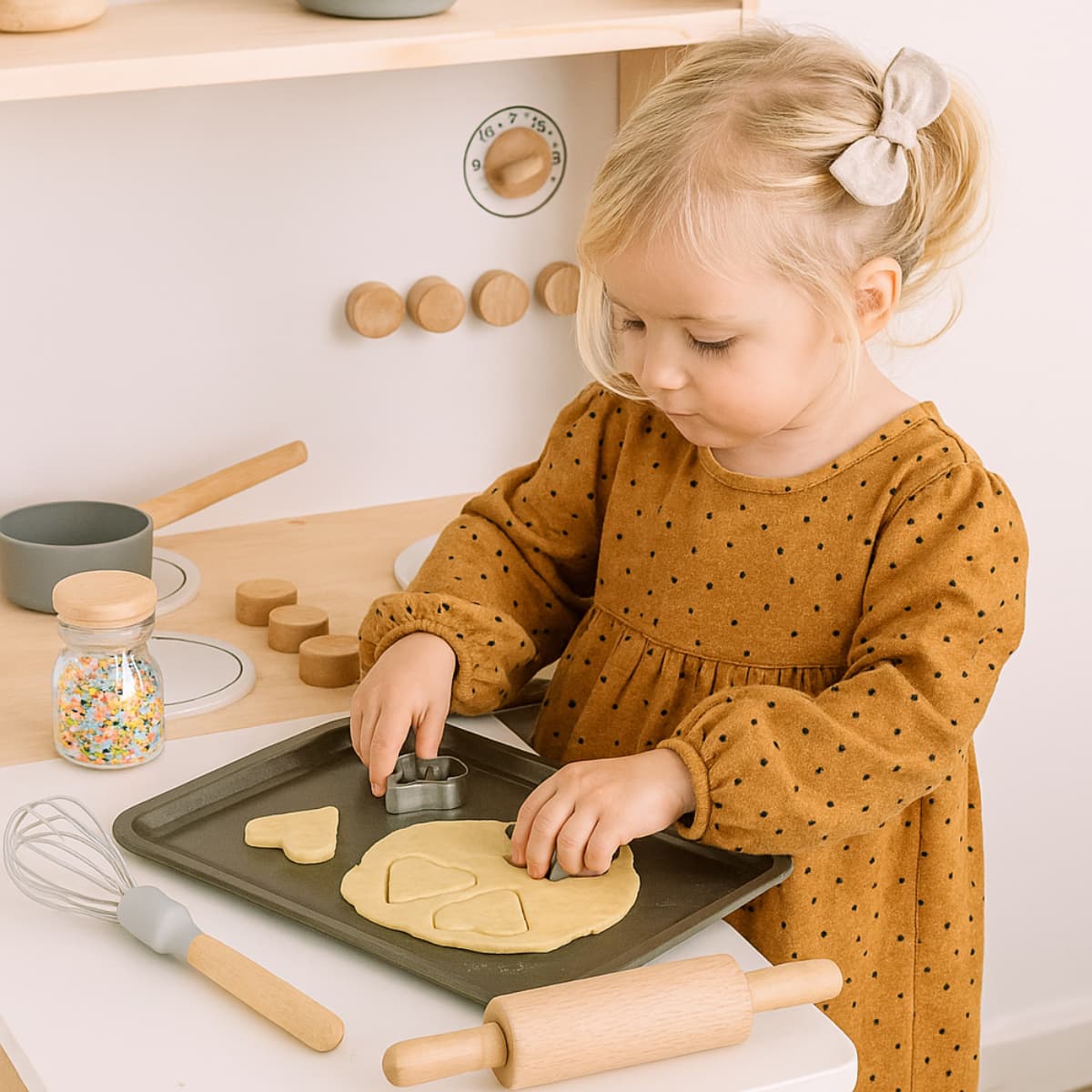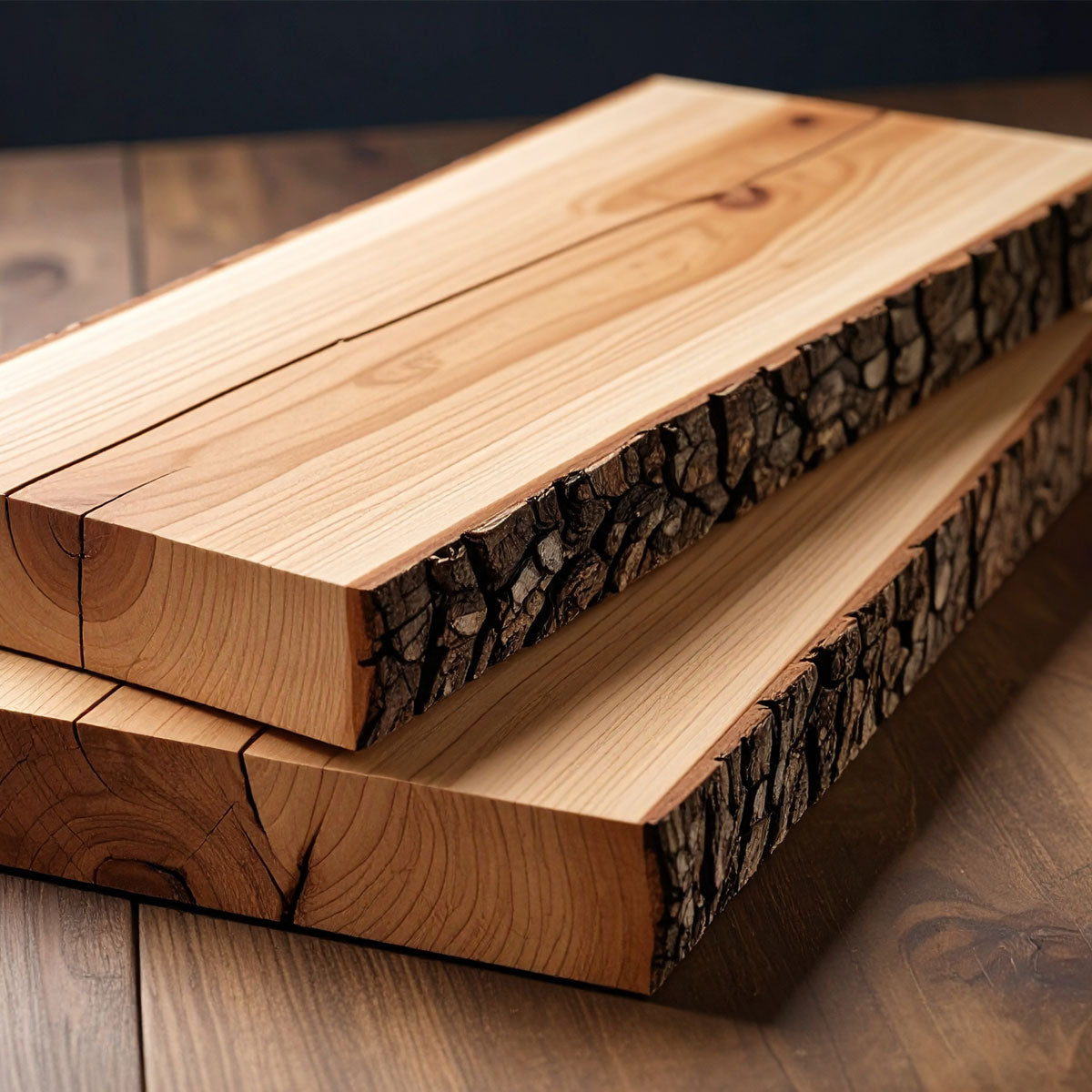
Poplar
Poplar Wood – Properties, Uses & Special Features
Poplar wood comes from trees of the Populus genus and is among the lightest native hardwoods in Europe. It is soft, splinter-resistant, and easy to work with – especially popular for lightweight constructions, packaging, and decorative applications. It is also used in the toy sector, particularly for indoor products with low mechanical stress.
Origin & Species
-
Genus: Populus
-
Main species: Black poplar (Populus nigra), Silver poplar (Populus alba), Aspen (Populus tremula)
-
Distribution: Europe, Asia, North America
-
Sustainability: Fast-growing, widely available, also cultivated in short-rotation plantations
Appearance & Structure
-
Color: Sapwood whitish to yellowish, heartwood light brown to reddish brown
-
Grain: Plain, diffuse-porous, with fine pores
-
Surface: Matte, homogeneous, with little visible figure
-
Special feature: Aspen is uniformly light – popular for matchsticks and veneer
Technical Properties
| Feature | Description |
|---|---|
| Hardness | Low to medium (Brinell approx. 10–15 N/mm²) |
| Density | Approx. 400–500 kg/m³ – very light |
| Workability | Excellent for sawing, peeling, milling, and slicing |
| Elasticity | High – splinter-resistant, easily split |
| Durability | Class 5 – not durable, suitable only for indoor use |
| Drying | Slow and even – low tendency to crack |
Applications
-
Furniture: Lightweight furniture, veneered panels, core wood
-
Toys: Scroll saw projects, tone bars, figures (for indoor use)
-
Interior design: Wall cladding, doors, sauna benches
-
Packaging: Chip baskets, fruit crates, wooden boxes
-
Matchstick industry: Shafts made from aspen
-
Prosthetics: Knee components, blanks (historically)
-
Household items: Snow shovels, drawing boards, toothpicks
-
Panel materials: Particleboard, fiberboard, plywood
-
Firewood: Low calorific value, better suited as kindling
Advantages
-
Very light and easy to process
-
Splinter-resistant and elastic
-
Minimal movement after drying
-
Sustainable due to rapid growth
-
Homogeneous structure – ideal for veneers and craft wood
Disadvantages
-
Low strength and load-bearing capacity
-
Not weather-resistant – unsuitable for outdoor use
-
Susceptible to fungi and insects
-
Limited decorative grain
-
Difficult to polish
Conclusion
Poplar wood is a versatile material for lightweight, decorative, and creative indoor applications. It is especially suitable for toys with low mechanical demands – ideal for craft toys, scroll saw work, and simple sound objects. Thanks to its good workability and sustainability, it is a popular choice for educational products with low weight.

